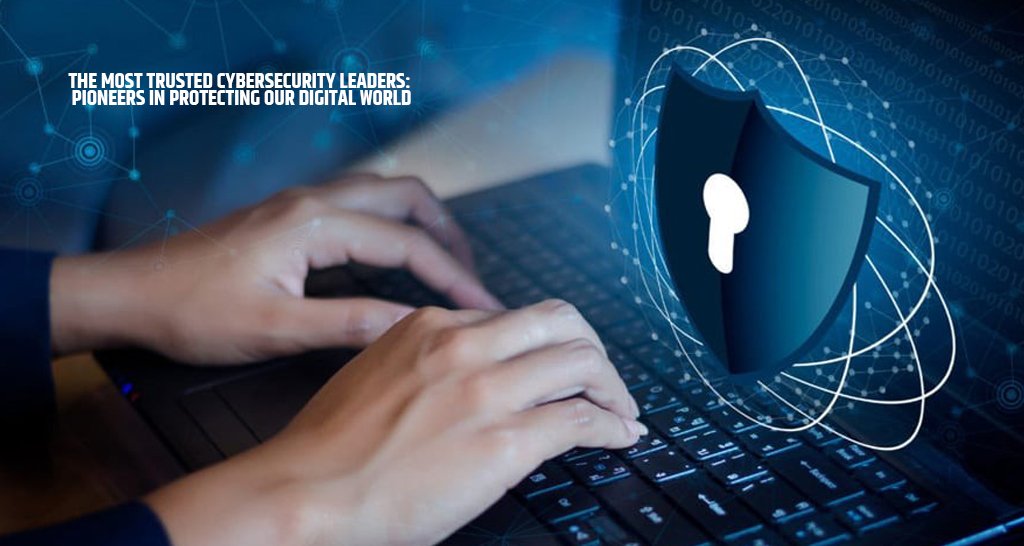Introduction to Cybersecurity Leadership
In today’s interconnected world, cybersecurity has become a pivotal concern for individuals and organizations alike. The role of cybersecurity leaders is vital in navigating this complex landscape, as they encompass not only technical prowess, but also strategic foresight and ethical integrity. A trusted cybersecurity leader is defined by a blend of expertise, trustworthiness, and innovative thinking. They must possess a comprehensive understanding of current threats and the evolving nature of cyber attacks, while also staying informed about the latest technological advancements that can bolster defense mechanisms.
The significance of trust in cybersecurity leadership cannot be overstated. Stakeholders must have confidence in their leaders to safeguard sensitive information and mitigate risks associated with cyber threats. This trust is built through a proven track record of effectively managing cybersecurity incidents and the ability to communicate transparently about risks and responses. Leaders in this field are charged with the responsibility of fostering a culture of security awareness across their organizations, ensuring that all employees recognize the importance of cybersecurity and their role in maintaining it.
Moreover, innovation plays a critical role in effective cybersecurity leadership. The cyber threat landscape is constantly evolving; hence, leaders must cultivate an environment that encourages creative thinking and the exploration of cutting-edge technologies. This includes the application of artificial intelligence, machine learning, and other advanced tools to enhance detection and response capabilities. By prioritizing innovation, cybersecurity leaders can better anticipate potential vulnerabilities and strengthen their organizations against emerging threats, thereby shaping the future of digital security.
In conclusion, the importance of cybersecurity leadership extends beyond mere technical skills. It encompasses trust, expertise, and innovation, all of which are crucial in defending against an increasingly sophisticated array of cyber threats. As the digital landscape evolves, these leaders will continue to play an instrumental role in the ongoing battle for cybersecurity.
Key Characteristics of Trusted Cybersecurity Leaders
Trusted cybersecurity leaders embody a range of essential traits and qualities that enable them to effectively safeguard their organizations from digital threats. Foremost among these characteristics is integrity. Integrity fosters trust, which is vital in an environment where sensitive data is constantly at risk. Cybersecurity leaders with integrity are transparent in their decision-making processes and uphold ethical standards, demonstrating reliability to their teams and stakeholders.
Another critical characteristic is strong communication skills. Cybersecurity leaders must articulate complex technical information in a manner that can be understood by non-technical stakeholders. This skill is imperative for creating awareness of potential cybersecurity threats and ensuring that all employees are engaged in maintaining robust security practices. By fostering open communication, leaders can create an environment where concerns can be addressed promptly, and security issues can be diagnosed and remedied effectively.
Technical knowledge is also fundamental for effective leadership in the cybersecurity domain. Leaders should possess a deep understanding of the current cybersecurity landscape, including emerging threats, best practices, and the latest defense mechanisms. This knowledge allows them to guide their organizations in implementing proactive security measures and responding to incidents swiftly, minimizing potential harm.
Lastly, the ability to foster a culture of security within an organization cannot be overlooked. Trusted cybersecurity leaders advocate for a collective responsibility towards security, encouraging employees at all levels to participate in security initiatives. This might involve conducting regular training and simulated phishing exercises to empower staff to recognize and mitigate risks. In doing so, leaders not only enhance the overall security posture but also create a resilient workforce capable of responding to evolving cyber threats.
Notable Cybersecurity Leaders and Their Contributions
In the rapidly evolving field of cybersecurity, several leaders stand out for their remarkable contributions and innovative approaches that have significantly shaped the industry. One prominent figure is Bruce Schneier, widely regarded as a security technologist and author. His insights into the intersection of technology and security have been invaluable, particularly through his publications like “Secrets and Lies.” Schneier’s work has profoundly influenced how organizations approach risk management and data protection, advocating for a more holistic view of security that encompasses not only technical measures but also policy and human factors.
Another notable leader is Eugene Kaspersky, co-founder of Kaspersky Lab. Under his leadership, the company has developed cutting-edge antivirus and cybersecurity technologies that have earned global recognition. Kaspersky’s proactive advocacy for cybersecurity awareness and education has played a crucial role in advancing public understanding of cyber threats. His efforts extend beyond commercial interests, as he frequently speaks at international conferences, emphasizing the need for collaboration in cybersecurity efforts across borders.
In recent years, Wendy Nather has emerged as a key figure in cybersecurity strategy, particularly in her role as the Head of Advisory CISO at Cisco. Nather’s emphasis on the human element of cybersecurity has helped organizations shift their focus from merely implementing technical defenses to fostering a culture of security awareness among employees. Her innovative approaches in risk assessment and cybersecurity architecture have considerably influenced how modern organizations defend against sophisticated threats.
These leaders, among many others, have made significant strides in enhancing cybersecurity practices globally. Their dedication to innovation, education, and collaboration continues to inspire future generations of cybersecurity professionals, shaping a more secure digital landscape. The contributions of these figures are not only commendable but also essential as the world increasingly relies on digital technology.
The Future of Cybersecurity Leadership
The landscape of cybersecurity is continually evolving, necessitating adaptive leadership that is well-equipped to confront emerging threats. As technology advances, the role of cybersecurity leaders will increasingly involve a diverse set of skills that transcend traditional technical expertise. The future will demand leaders who not only possess a strong IT background but also have an understanding of socio-political implications and ethical considerations in digital security.
One significant trend is the emphasis on diversity within cybersecurity teams. Bringing together individuals from varied backgrounds fosters innovative problem-solving and enhances creativity in addressing complex security issues. Diverse leadership teams can provide unique perspectives that contribute to more comprehensive security strategies, allowing organizations to anticipate vulnerabilities that may not be obvious to homogenous groups. This shift towards diversity is not merely a benchmark for inclusivity but is becoming a critical component for effective risk management.
Collaboration is another key element shaping the future of cybersecurity leadership. As cyber threats become more sophisticated, leaders must work closely with multiple stakeholders, including government entities, private sector organizations, and global counterparts. This collaborative approach enables the sharing of crucial intelligence, resources, and best practices, ultimately fortifying collective defenses against cyber threats. Moreover, it invites a culture of transparency and mutual support that enhances responsiveness to potential attacks.
Proactive strategies will also play a crucial role moving forward. Leaders will need to develop a forward-thinking mindset, focusing on prevention and preparedness, rather than merely responding to incidents post-factum. Establishing robust training programs, investing in cutting-edge technologies, and conducting regular threat assessments will become essential to fortifying organizational resilience. With these approaches, cybersecurity leaders can build credibility and trust within their organizations while addressing the challenges and opportunities that lie ahead.



